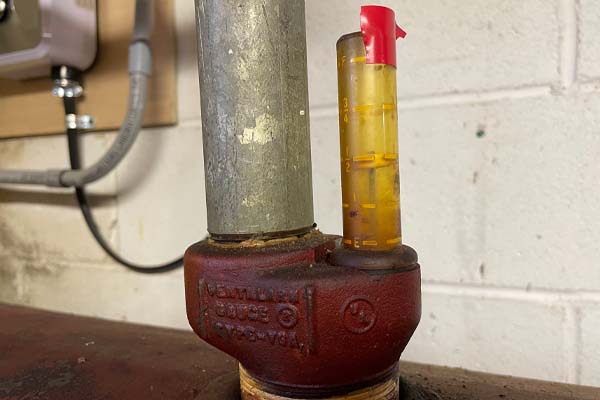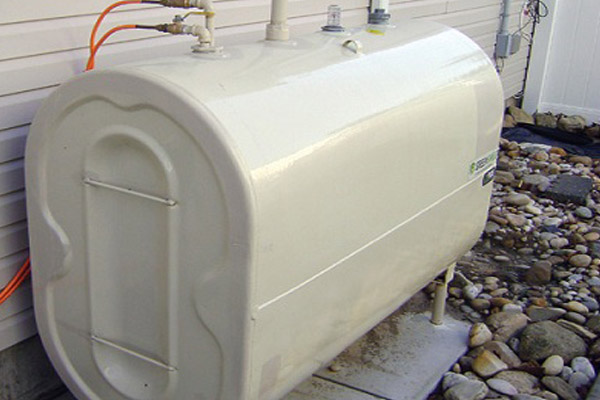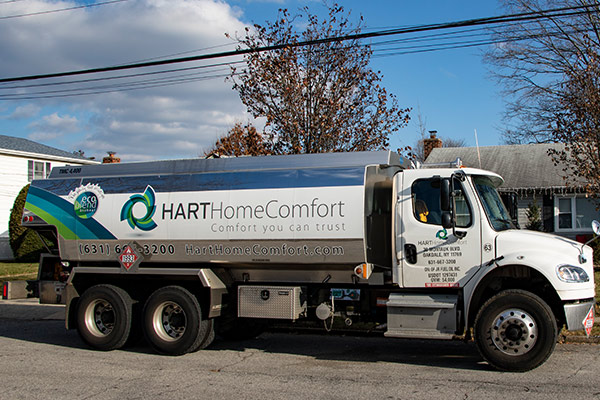Understanding Your Heating Oil Tank Gauge

Homes equipped with heating oil systems stand confident against winter’s chill. The advantage of having fuel in a dedicated tank is that these homes don’t rely on an uninterrupted external flow, setting them apart from those that depend on natural gas. It’s essential to ensure their tank can match their heating demands. Regularly monitoring the heating oil tank gauge to note the fuel levels is recommended, allowing them to arrange timely heating oil deliveries from Hart Home Comfort, your local fuel oil provider.
Understanding Float Gauges in Heating Oil Tanks
Table of Contents
Technology has seen significant advancements, yet the design of oil tanks remains consistent, emphasizing its enduring efficiency. The tank’s main body, typically made from welded steel, is characterized by its smoothly rounded edges. It features a fill pipe for oil replenishment and a vent pipe to release surplus air. Just below the vent, a whistle or vent alarm sounds when air exits, providing an essential auditory signal.
Another vital component is the oil feed lines, which transport oil from the tank to the burner. But the standout feature is the float gauge. This gauge has a hinged arm beneath it, designed to float on the oil’s surface. As oil depletes, the arm lowers, moving the gauge’s indicator disc, thus giving homeowners an accurate insight into their oil levels. This gauge is instrumental in ensuring timely refills and uninterrupted warmth.
Locating the Oil Tank on Your Property

For those who recently acquired a new home, one of the first tasks might be locating the oil tank to monitor the heating oil levels. Often, this task is straightforward, especially when the tank is positioned above ground, making it visibly evident. Yet, in some instances, these tanks might be tucked away in basements or even buried underground. Despite their location, essential components like external pipes and the float gauge should always be accessible for regular checks.
In terms of size, these tanks are sizable storage units, with a standard tank typically designed to hold 275 gallons or even more of heating oil. However, for safety considerations, they are never filled to maximum capacity. Instead, they usually house around 225 to 250 gallons of oil, leaving ample space for air. This deliberate design ensures that the heating oil has room to expand, preventing any potential complications.
Interpreting the Heating Oil Tank Float Gauge
With the oil tank located, the next step involves understanding the gauge atop the tank. This gauge is typically a transparent cylindrical device with a clearly visible indicator disc inside. Standard markings on the gauge usually include F for Full, followed by 3/4, 1/2, 1/4, and finally, E for Empty. To determine the oil levels, observe the position of the disc concerning these markings.
For first-timers, the process might seem a tad confusing. A common question is whether to track the top or the bottom edge of the disc. In truth, the precise position is not critically important, as the gauge is more of an estimator than an exact measurement tool. The best practice is to gauge the oil level by noting where the center of the disk aligns with the marked indicators.
Determining the Remaining Heating Oil in Your Tank
Once you’ve established the estimated fuel level using the gauge, it’s time to calculate the actual gallons left in your heating oil tank. This calculation requires a bit of manual effort but is straightforward. Begin by identifying the tank’s size, which gives you its total capacity. A common size for many homes is a 275-gallon tank. However, given safety margins, such tanks typically hold up to 240 gallons of oil, with the rest of the space left for air expansion.
Using this understanding, if your float gauge indicates the oil level at 1/4, it translates to approximately 60 gallons remaining (240 gallons x 0.25). While this might seem substantial, it’s always wise to think ahead. A 60-gallon reserve could last a few weeks, but scheduling a refill sooner rather than later is recommended. As a general guideline, reaching out to Hart Home Comfort for a heating oil delivery when your tank dips to around 30% full ensures you’re never caught off-guard.
Detecting Issues with Your Oil Tank Gauge
While the float gauge is a handy tool for estimating fuel levels, it isn’t immune to issues. Occasionally, it might fail to provide an accurate reading due to a malfunction in the float mechanism. Remove the protective casing and gently push the float downward to verify its functionality. Upon release, if the float doesn’t rise back to its original position, you might be dealing with a malfunctioning float that warrants expert attention. Common causes of float failure include wear and tear in older tanks, the arm becoming misaligned and jamming against the tank’s side, or sludge accumulation restricting the float’s movement.
Should you encounter a faulty gauge or have a tank without a float gauge, don’t worry, alternative methods to ascertain the fuel level. A manual measurement involves using a slender, long stick that can easily fit through the tank’s fill hole and spans its entire height. After a recent refill, immerse the stick to identify the fuel’s uppermost level when the tank is near its full capacity. Mark this point on the stick. In subsequent checks, you can use the marked stick to gauge how much the fuel level has dropped, ensuring you never run out unexpectedly. Remember, for any gauge-related issues or concerns, contacting Hart Home Comfort’s team ensures expert guidance and timely resolutions.
How Long Your Heating Oil Tank Might Last

The duration a heating oil tank lasts before needing a refill isn’t just a matter of time but is influenced by various factors:
- Tank capacity
- Preferred indoor temperature settings
- Size of the dwelling
- Local climate conditions
- Home insulation quality
- Frequency of heating system operation
- Efficiency of the heating unit
While many households use heating oil to warm specific areas, some opt to heat their entire living space. To better predict their heating oil needs, homeowners should track their fuel consumption patterns for a year.
Conclusion
Any homeowner wouldn’t want to face the biting cold of winter without adequate heating. Consistently monitoring the float gauge is vital. If readings indicate the tank’s content is less than 1/3 of its capacity, it’s advisable to arrange a refill promptly. Staying proactive ensures your living space remains cozy and inviting throughout the chilly season. With Hart Home Comfort, you can trust timely deliveries and a warm home all winter.
Call Hart Home Comfort For Your Home Heating Requirements

For top-notch HVAC services, call Hart Home Comfort. Our certified technicians provide quality heating and cooling services, including maintenance, repairs, replacements, and installations. Armed with the right tools and experience, we ensure precise servicing of any HVAC system. We offer competitive and affordable home comfort services. For HVAC repairs and replacements, we recommend budget-friendly solutions tailored to your needs. Contact us today for a free, in-home estimate.
We also provide prompt and customizable heating oil deliveries, including EcoBlend Bioheat® heating oil, which blends ultra-low sulfur heating oil and biodiesel. Our deliveries reduce carbon emissions and support environmental conservation. Call today to schedule a delivery for your home or office.
For any questions about what Hart Home Comfort can do for you, give us a call today. Click here to contact us now or call us at (631) 667-3200 to find out more! Click the link to view our service area.
Related Articles: